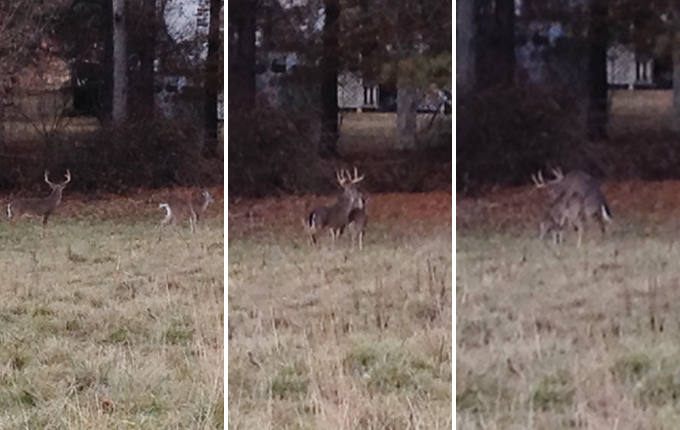Big Buck Proves That The Rut Isn’t Over
Just as I was ready to declare that we’re in the post-rut era in Georgia, Arkansas, and South Carolina, I...

Just as I was ready to declare that we’re in the post-rut era in Georgia, Arkansas, and South Carolina, I get a report of continuing rutting activity.
Yesterday, Robert Deaton was visiting with relatives in Jackson County, in the east-central region of Georgia, when they spotted a doe and a 130-class buck in the back yard. The buck would not leave the estrous doe, and the pair hung around for several hours. Although the rut is traditionally mid-November for this area of the state, the buck mounted the doe twice. Deaton took the above photos with his cell phone to document the amazing sight.
So, most—but not all–rut activity is winding down in Georgia, South Carolina, and Arkansas. The peak was back in November, when most does come into estrus and we see elevated activity. But as long as bucks are in hard antler, they are ready and willing to breed. It’s just that there are not as many willing does remaining.
When a doe does come into estrus this late in the year, there can be some great action as every buck in the area that catches her scent will be after her. Such a doe may have been born at a later time than others, or missed being bred her first cycle. Whatever the reason, she will create great interest among bucks. It may be very difficult to locate such a doe, but if you can, the reward may be a trophy buck coming in range, with its attention diverted toward the female.
I am seeing less rut sign in the woods now, and that is the case for most hunters in these states. “I’m not seeing big bucks now,” said Bruce Compton, who hunts in Bamberg County, South Carolina. “I’ve been watching groups of does. I have seen two to three bucks together.”
A scrape that I have been monitoring with a trail camera caught several nice bucks visiting it the week of Thanksgiving. But this past week, only one young buck visited it.
In Mississippi, Alabama, and portions of Florida and Louisiana, bucks are entering pre-rut, so hunters there should prepare for elevated buck activity.